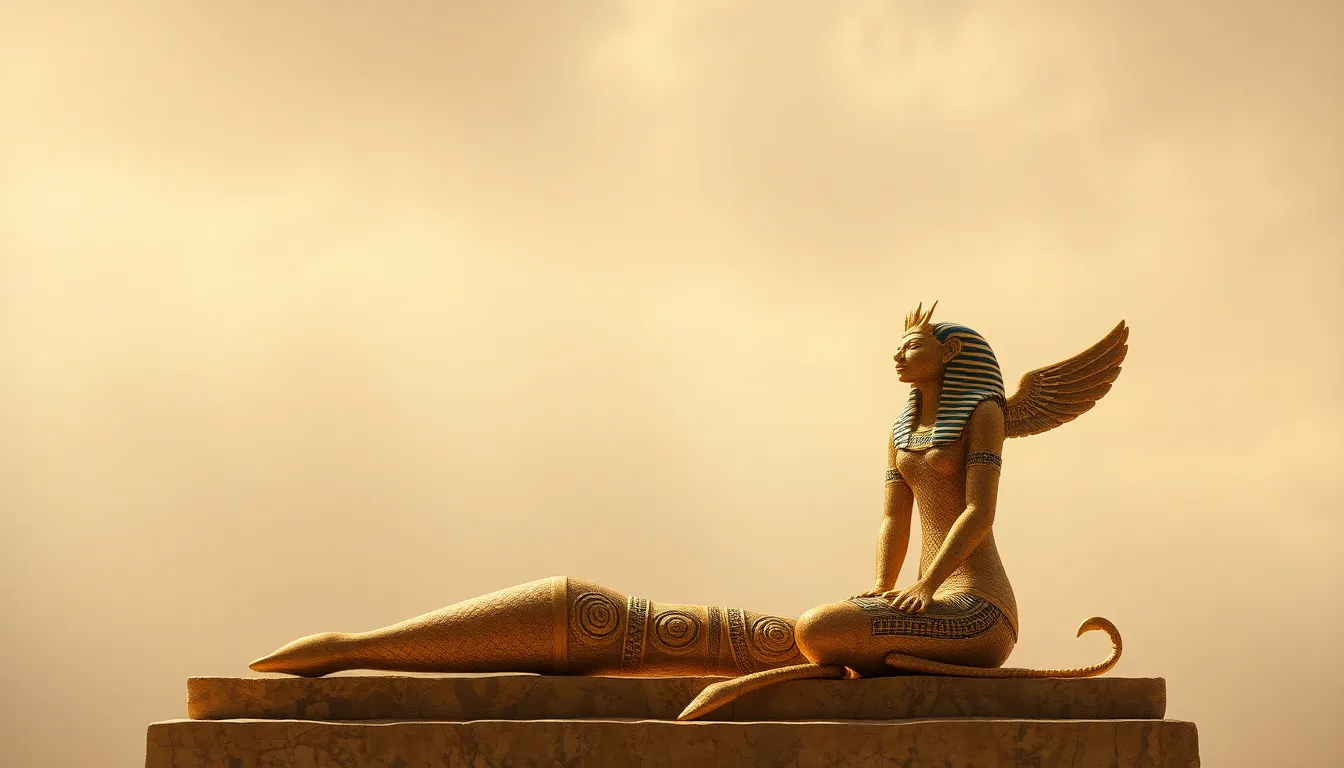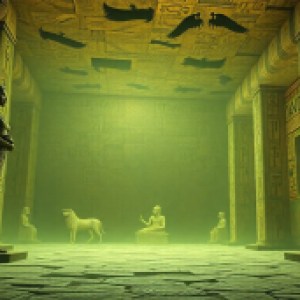The Role of the Goddess Sekhmet in Egyptian Funerary Texts
I. Introduction
In ancient Egyptian mythology, Sekhmet stands out as a highly significant deity, embodying both the ferocity of a lioness and the nurturing aspects of healing. Revered as the goddess of war and destruction, she also played a vital role in the preservation of life and health. Funerary texts, essential to understanding ancient Egyptian beliefs and practices, provide insight into how Sekhmet was perceived and invoked in the context of death and the afterlife.
This article aims to explore the multifaceted role of Sekhmet in funerary practices and texts, highlighting her significance as both a warrior and a healer in the journey of the deceased.
II. Background on Sekhmet
Historically, Sekhmet was worshipped primarily in the city of Memphis and is believed to have originated in the early dynastic period of ancient Egypt. She was often depicted as a lioness or as a woman with the head of a lioness, symbolizing her power and fierce nature.
Attributes and symbolism associated with Sekhmet include:
- War and destruction
- Healing and medicine
- Protection
Her dual nature as both a goddess of war and a goddess of healing reflects the ancient Egyptians’ belief in the necessity of balance between destruction and creation, life and death.
III. Funerary Texts: An Overview
Funerary texts in ancient Egypt served a crucial purpose: to guide and protect the deceased in their journey to the afterlife. These texts were inscribed on tomb walls, coffins, and other funerary objects, and included spells, prayers, and rituals meant to assist the dead in navigating the challenges they would face.
Common examples of funerary texts include:
- Pyramid Texts
- Coffin Texts
- Book of the Dead
The significance of these texts lay in their ability to ensure a safe passage for the deceased, providing them with the knowledge and support needed to overcome obstacles in the afterlife.
IV. Sekhmet’s Depiction in Funerary Texts
In various funerary texts, Sekhmet is referenced as a powerful figure who plays a role in the protection and guidance of the dead. Her presence is often invoked to shield the deceased from malevolent forces and to ensure their safe passage to the afterlife.
Iconography and imagery of Sekhmet can be found in tombs and funerary artifacts, often depicting her in a protective stance, ready to defend the deceased. Common visual representations include:
- Statues of Sekhmet placed near tombs
- Wall paintings illustrating her fierce nature
- Amulets featuring her likeness, worn by the living and the dead alike
The contextual significance of Sekhmet’s portrayal lies in her association with the journey of the deceased, emphasizing her role as a guardian in the afterlife.
V. Sekhmet as a Protector in the Afterlife
As a protective figure for the deceased, Sekhmet’s role was pivotal in ensuring their safety in the afterlife. She was often invoked in rituals and offerings designed to appease her and to gain her favor. Rituals associated with Sekhmet included:
- Offerings of food and drink at her shrines
- Prayers for protection and healing
- Rituals to celebrate her dual nature as both a warrior and a healer
Sekhmet’s relationships with other deities in the afterlife narratives also enhanced her protective role. For instance, her connection with Osiris, the god of the afterlife, and Anubis, the god of mummification and the afterlife, created a network of divine support for the deceased.
VI. Sekhmet’s Influence on Mortuary Rituals
Sekhmet’s characteristics significantly shaped funerary rituals and beliefs. Her attributes were integrated into the preparation of the deceased, influencing how rituals were performed and what offerings were made.
The role of the priesthood and cult practices dedicated to Sekhmet in funerary contexts was also notable, as priests would conduct ceremonies to honor her and seek her blessings for the deceased. This included:
- Recitation of hymns and texts dedicated to Sekhmet
- Performance of rituals to invoke her protective powers
- Maintenance of temples and shrines where offerings could be made
This integration of Sekhmet’s attributes into mortuary practices highlights the importance of her role in ancient Egyptian religion and funerary customs.
VII. Comparative Analysis with Other Deities
To understand Sekhmet’s unique role in funerary texts, it is essential to compare her with other deities such as Osiris and Anubis. While Osiris is primarily associated with resurrection and the afterlife, and Anubis with mummification and guiding souls, Sekhmet’s involvement emphasizes protection and healing.
The unique aspects of Sekhmet’s involvement in the afterlife journey include:
- Her fierce protection against malevolent forces
- Her role in healing and ensuring well-being in the afterlife
- The blending of her martial and nurturing qualities in funerary practices
Examining the interplay between various deities in funerary mythology provides valuable insights into the complexities of ancient Egyptian beliefs regarding life, death, and the afterlife.
VIII. Conclusion
Sekhmet’s multifaceted role in Egyptian funerary texts illustrates her significance as both a warrior and a healer. Her protective nature ensured the safety of the deceased as they embarked on their journey to the afterlife, while her healing attributes offered hope for life beyond death. As we explore the rich tapestry of Egyptian mythology, Sekhmet remains a powerful symbol of the balance between destruction and creation, underscoring the intricate beliefs of the ancient Egyptians regarding mortality and the afterlife.




